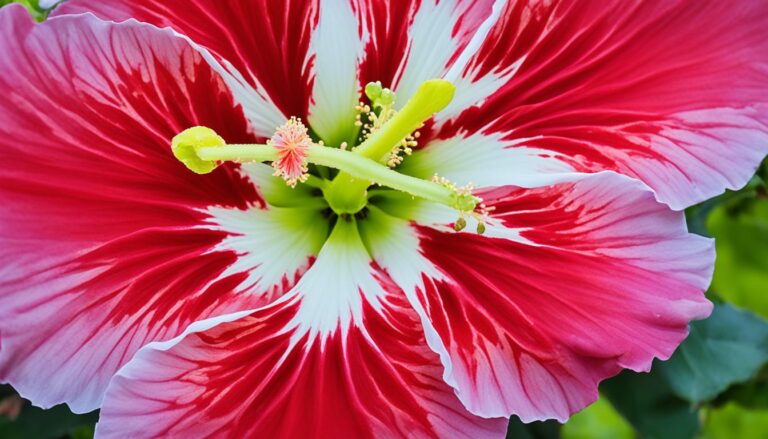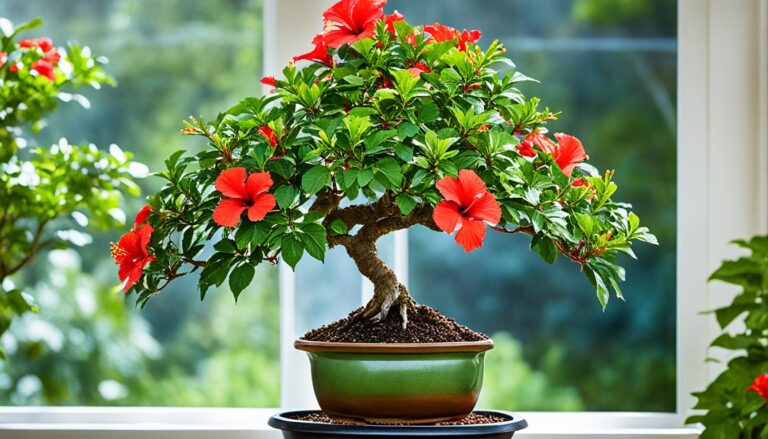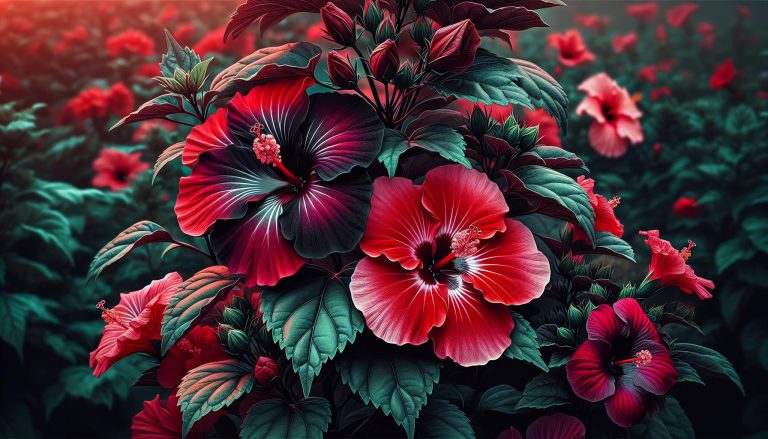Can You Eat Hibiscus Flowers? Discover Delicious Uses and Where to Find Them
Have you ever admired the vibrant beauty of hibiscus flowers and wondered if they’re more than just eye candy? I’ve often found myself captivated by their stunning petals and pondered their potential beyond ornamental gardens. As it turns out, these colorful blossoms aren’t just for show – they’re edible too!
But before you go nibbling on every hibiscus flower you see, there’s more to know. Which varieties are safe to eat? How should they be prepared? What do they taste like? In this article, I’ll dive into the world of edible hibiscus flowers, exploring their culinary uses, health benefits, and potential precautions. Whether you’re a curious food enthusiast or a gardener looking to expand your edible palette, you’re in for a flavorful journey.
What Are Hibiscus Flowers?
Hibiscus flowers are vibrant, trumpet-shaped blooms renowned for their striking appearance and versatility. These flowers belong to the Malvaceae family and come in a wide range of colors, sizes, and varieties.
Common Varieties of Hibiscus
Hibiscus plants are diverse, with over 200 species found worldwide. Here are some of the most common varieties:
- Hibiscus rosa-sinensis: Known as Chinese hibiscus or tropical hibiscus
- Hibiscus syriacus: Also called Rose of Sharon or shrub althea
- Hibiscus sabdariffa: Commonly referred to as roselle or red sorrel
- Hibiscus moscheutos: Native to North America, often called swamp rose mallow
- Hibiscus mutabilis: Known as the Confederate rose or cotton rosemallow
Each variety has unique characteristics, from flower size and color to growth habits and environmental preferences. The Hibiscus sabdariffa, for instance, is particularly popular for culinary use due to its tart, cranberry-like flavor.
Can You Eat Hibiscus Flowers?
Yes, you can eat hibiscus flowers. Many hibiscus varieties are edible and offer a unique flavor profile to culinary creations. Let’s explore the edible parts of the hibiscus plant and their uses in cooking.
Edible Parts of the Hibiscus Plant
The hibiscus plant offers several edible components:
- Flowers: The vibrant petals are the most commonly consumed part, used fresh or dried.
- Calyxes: The fleshy, cup-like structures at the base of the flowers are often used in teas and jams.
- Leaves: Young, tender leaves can be eaten raw or cooked.
- Seeds: Some hibiscus species produce edible seeds, though they’re less commonly used.
I’ve found that the Hibiscus sabdariffa variety, also known as roselle, is particularly popular for its tart, cranberry-like flavor. Its calyxes are often used to make hibiscus tea, syrups, and preserves.
Culinary Uses of Hibiscus Flowers
Hibiscus flowers offer versatile culinary applications:
- Teas: Dried hibiscus petals create a tart, refreshing beverage.
- Salads: Fresh petals add color and a tangy flavor to green salads.
- Garnishes: Use whole flowers to decorate desserts or cocktails.
- Syrups: Hibiscus-infused syrups enhance cocktails and sodas.
- Jellies and jams: The tart flavor of hibiscus makes excellent preserves.
- Candied flowers: Sugar-coated hibiscus petals serve as unique confections.
When cooking with hibiscus, I’ve noticed its ability to impart a vibrant red color and a distinctive tart flavor to dishes, making it a favorite among chefs and home cooks alike.
Nutritional Benefits of Hibiscus Flowers
Hibiscus flowers offer a range of nutritional benefits, making them a valuable addition to a healthy diet. These vibrant blooms are packed with essential vitamins, minerals, and antioxidants that contribute to overall well-being.
Vitamins and Minerals
Hibiscus flowers are rich in vitamins and minerals that support various bodily functions. They contain:
- Vitamin C: 18.4 mg per 100g, boosting immune function and collagen production
- Calcium: 215 mg per 100g, essential for strong bones and teeth
- Iron: 2.9 mg per 100g, crucial for oxygen transport in the blood
- Potassium: 208 mg per 100g, regulating fluid balance and nerve signals
- Magnesium: 51 mg per 100g, supporting muscle and nerve function
These nutrients contribute to overall health, supporting immune function, bone strength, and proper bodily processes.
Antioxidant Properties
Hibiscus flowers are a potent source of antioxidants, which protect the body from oxidative stress and cellular damage. Key antioxidants include:
- Anthocyanins: Responsible for the flower’s vibrant color
- Flavonoids: Known for their anti-inflammatory properties
- Polyphenols: Linked to reduced risk of chronic diseases
Studies show that hibiscus extract contains higher antioxidant levels than some common fruits:
| Food Item | Antioxidant Content (mmol/100g) |
|---|---|
| Hibiscus | 6.99 |
| Blueberries | 4.37 |
| Pomegranate | 3.97 |
These antioxidants help combat free radicals, potentially reducing the risk of chronic diseases and supporting overall health.
How to Prepare Hibiscus Flowers for Consumption
Preparing hibiscus flowers for consumption involves a few simple steps to ensure they’re clean and ready for various culinary applications. I’ll guide you through the process of preparing hibiscus flowers for both raw consumption and cooking or brewing methods.
Raw Consumption
To consume hibiscus flowers raw:
- Select fresh, pesticide-free hibiscus flowers
- Rinse the flowers gently under cool water
- Remove the pistil and stamen from the center of the flower
- Pat the petals dry with a clean paper towel
- Use immediately in salads, as garnishes, or candied for desserts
Raw hibiscus petals add a vibrant color and tart flavor to dishes. They’re excellent for decorating cakes, enhancing fruit salads, or creating unique cocktail garnishes.
Cooking and Brewing Methods
For cooking and brewing hibiscus flowers:
- Choose dried hibiscus flowers or calyxes
- Rinse briefly to remove any debris
- For tea: Steep 2 tablespoons of dried hibiscus in 1 cup of boiling water for 5 minutes
- For syrup: Simmer 1 cup of dried hibiscus with 2 cups of water and 1 cup of sugar for 15 minutes
- For jams or jellies: Cook hibiscus with sugar and pectin according to a specific recipe
Cooking hibiscus intensifies its flavor and color. It’s commonly used in teas, syrups, and preserves. When brewing, adjust the steeping time to achieve desired strength. For cooking, experiment with different sugar levels to balance the flower’s natural tartness.
Popular Culinary Uses for Hibiscus Flowers
Hibiscus flowers offer a versatile and flavorful addition to various culinary creations. Their tart, cranberry-like taste and vibrant color make them a favorite ingredient for chefs and home cooks alike.
Hibiscus Tea
Hibiscus tea is the most common culinary use for these flowers. To make hibiscus tea, steep dried hibiscus calyxes in hot water for 5-10 minutes. The resulting beverage has a deep red color and a refreshing, tangy flavor. It’s often enjoyed both hot and cold, sometimes with added sweeteners or citrus fruits to balance the tartness.
Salads and Garnishes
Fresh hibiscus petals add a pop of color and a unique flavor to salads. Chop the petals and sprinkle them over green salads, fruit salads, or grain bowls. As a garnish, whole hibiscus flowers make stunning decorations for cocktails, desserts, and savory dishes, enhancing both visual appeal and taste.
Desserts and Syrups
Hibiscus flowers shine in sweet applications. To make hibiscus syrup, simmer dried hibiscus flowers with sugar and water, then strain. This vibrant syrup is perfect for flavoring cocktails, sodas, or drizzling over desserts. In baking, incorporate dried hibiscus powder into cake batters, frostings, or cookie doughs for a tart flavor and pink hue. Candied hibiscus flowers serve as elegant decorations for cakes and pastries, while hibiscus jelly or jam offers a unique spread for toast or pastry fillings.
Potential Side Effects and Precautions
While hibiscus flowers offer numerous benefits, it’s essential to be aware of potential side effects and take necessary precautions. Certain individuals may experience adverse reactions or interactions when consuming hibiscus.
Allergies and Sensitivities
Hibiscus allergies are rare but possible. Some people may experience allergic reactions such as:
- Itching or swelling of the mouth, lips, or throat
- Hives or skin rashes
- Difficulty breathing
- Nausea or vomiting
If you’re allergic to other plants in the Malvaceae family (e.g., okra, cotton), you’re more likely to be sensitive to hibiscus. Always start with a small amount when trying hibiscus for the first time and discontinue use if you notice any allergic symptoms.
Interactions with Medications
Hibiscus can interact with certain medications, potentially affecting their efficacy or causing unwanted side effects:
- Blood pressure medications: Hibiscus may lower blood pressure, intensifying the effects of hypertension drugs.
- Diabetes medications: It can potentially lower blood sugar levels, requiring adjustments to diabetes medication dosages.
- Acetaminophen: Hibiscus may increase the rate at which the liver processes this pain reliever, reducing its effectiveness.
- Chloroquine: Hibiscus tea can decrease the absorption of this antimalarial drug.
Consult your healthcare provider before consuming hibiscus if you’re taking any medications, especially those for blood pressure, diabetes, or malaria prevention.
Where to Find Edible Hibiscus Flowers
Local Grocery Stores
Many local grocery stores now stock edible hibiscus flowers in their produce or international food sections. I’ve found dried hibiscus flowers, often labeled as “flor de Jamaica,” in the Hispanic food aisle. Some stores also carry fresh hibiscus flowers in the produce section, typically near exotic fruits or edible flowers.
Farmers Markets
Farmers markets are excellent sources for fresh, locally grown hibiscus flowers. I’ve discovered that vendors specializing in herbs or edible flowers often offer hibiscus. These markets provide the opportunity to purchase freshly harvested flowers and discuss growing techniques with the farmers.
Online Retailers
Numerous online retailers sell dried hibiscus flowers, making them easily accessible. Amazon, Etsy, and specialty food websites offer a wide variety of hibiscus products, including whole dried flowers, tea blends, and powders. When purchasing online, I always check reviews and opt for reputable sellers to ensure quality.
Health Food Stores
Health food stores and natural grocers frequently stock dried hibiscus flowers and hibiscus-based products. I’ve found these stores particularly useful for sourcing organic or wildcrafted hibiscus, as well as hibiscus supplements and teas.
Specialty Tea Shops
Tea shops often carry hibiscus flowers as a standalone ingredient or as part of herbal blends. These shops typically offer high-quality, food-grade hibiscus suitable for both brewing and culinary use.
Growing Your Own
For a sustainable and cost-effective option, growing hibiscus plants at home is an excellent choice. Garden centers and nurseries sell hibiscus seedlings or seeds. I’ve found that Hibiscus sabdariffa, the variety most commonly used for culinary purposes, grows well in warm climates and can be cultivated in containers for colder regions.
Conclusion
Hibiscus flowers are a delightful and versatile addition to your culinary repertoire. Their tangy flavor and vibrant color can enhance a variety of dishes and beverages. Whether you’re sipping on a refreshing tea or experimenting with new recipes these edible blooms offer both taste and potential health benefits. With numerous options for sourcing hibiscus flowers you can easily incorporate them into your diet. So why not explore the world of edible hibiscus and discover a new favorite ingredient? I’m confident you’ll find these flowers to be a beautiful and flavorful addition to your meals and drinks.






